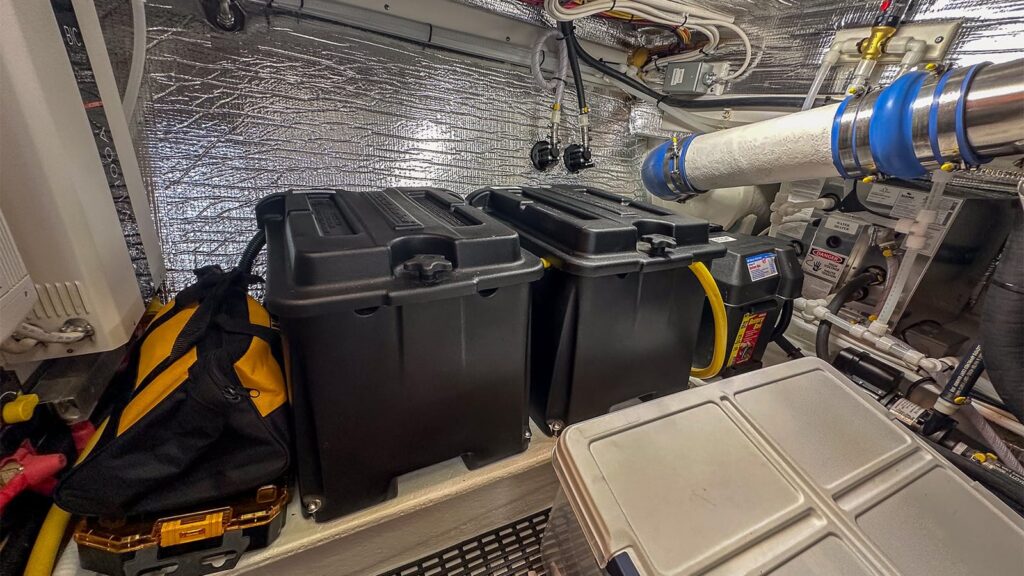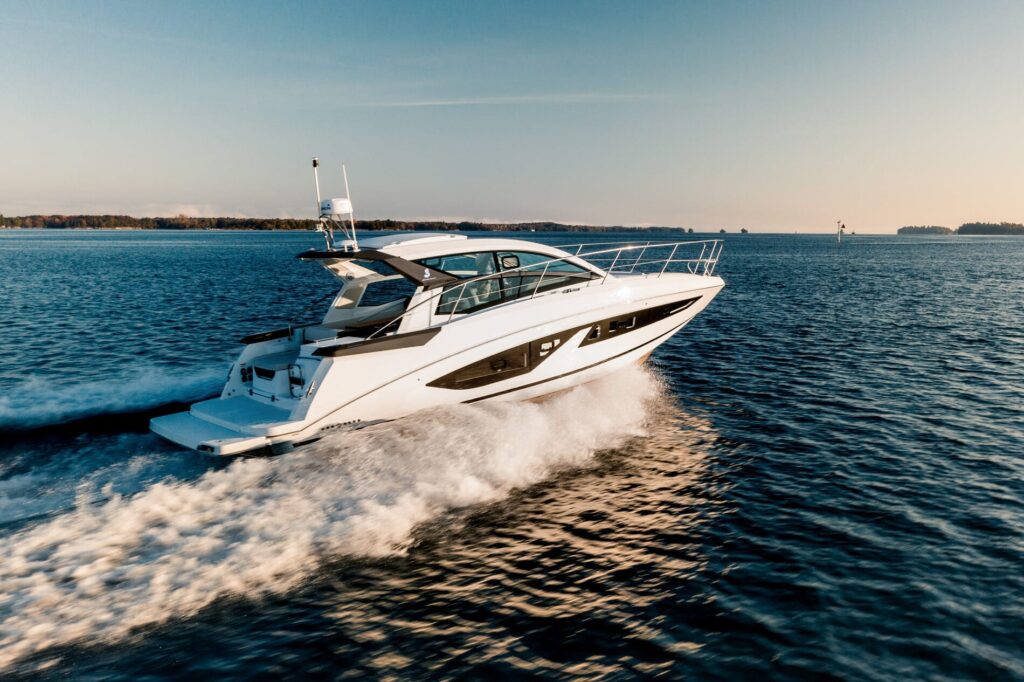Understanding Marine Electrical Systems: Staying Safe and Powered Up
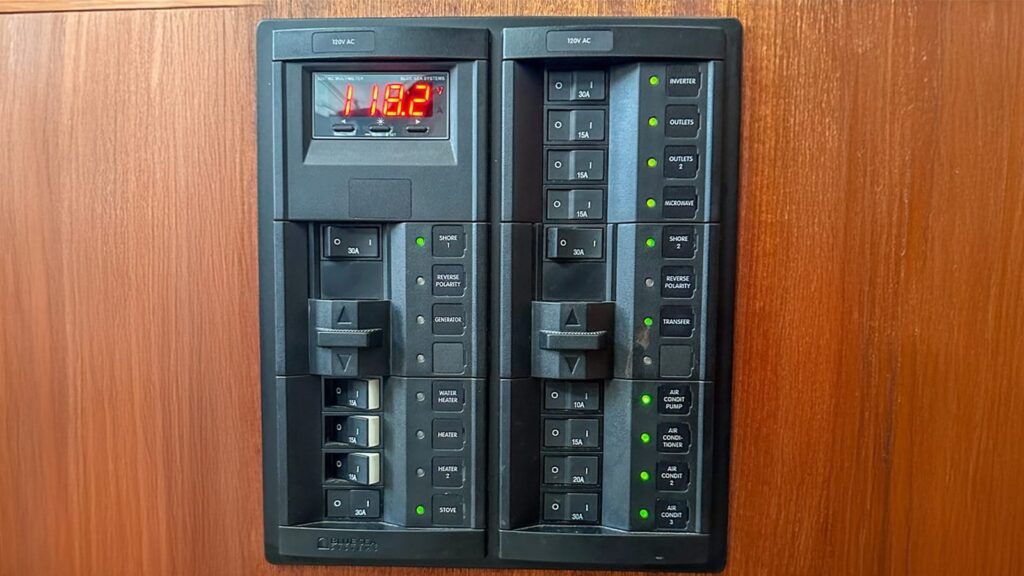
(from Advanced Powerboating, the textbook for American Boating 103/104)
Table of contents
Power and Peril
As vessels become more advanced and feature-rich, so do the electrical systems that power them. For many boaters, the complexity of onboard wiring, batteries, and electronics can seem overwhelming—almost like you need a degree in electrical engineering to make sense of it all.
Fortunately, you don’t. What you do need is a strong foundation in the basics and a clear focus on safety.
Safety First: Electricity and Water Don’t Mix
The very first thought you should have when dealing with marine electrical systems is simple: safety.
Electrical faults in a waterborne environment come with added risks, not only to your vessel but also to you and your crew. Always wear rubber gloves, safety glasses, and rubber-soled shoes when working with batteries or electrical components. These basic steps offer protection from electric shock, acid burns, and other preventable accidents.
Remain alert to the signs of a developing problem. Listen for unusual buzzing or popping sounds, look for signs of corrosion or melting, and never ignore the smell of burning plastic or rubber. Always know where your fire extinguisher is and how to use it.
Battery Basics: Dead on Arrival?
Few moments are more frustrating than discovering your battery is dead. Whether you’re dockside and ready to shove off or anchored somewhere beautiful but remote.
Dead batteries happen. Maybe you left a system running, or perhaps your battery is nearing the end of its life. If you’re fortunate enough to have a built-in charger, resolving the issue could be as simple as flipping a switch. But most vessels don’t come equipped with such luxuries.
That’s where backup charging tools become critical.
Essential Tools: Smart Chargers and Jump Packs
A portable smart charger is a great tool to carry onboard. These devices not only recharge your battery to its optimal level, but also shut off automatically to prevent overcharging.
If you’re in a hurry or just need enough power to get the engine started, a portable jump pack can be a lifesaver—assuming your engine’s power demands fall within its capability. There are many marine-grade models available, and many seasoned boaters consider them an essential part of their onboard kit.
The key takeaway? Be prepared. Relying on the marina or a good Samaritan for a jump isn’t a strategy—it’s a gamble.
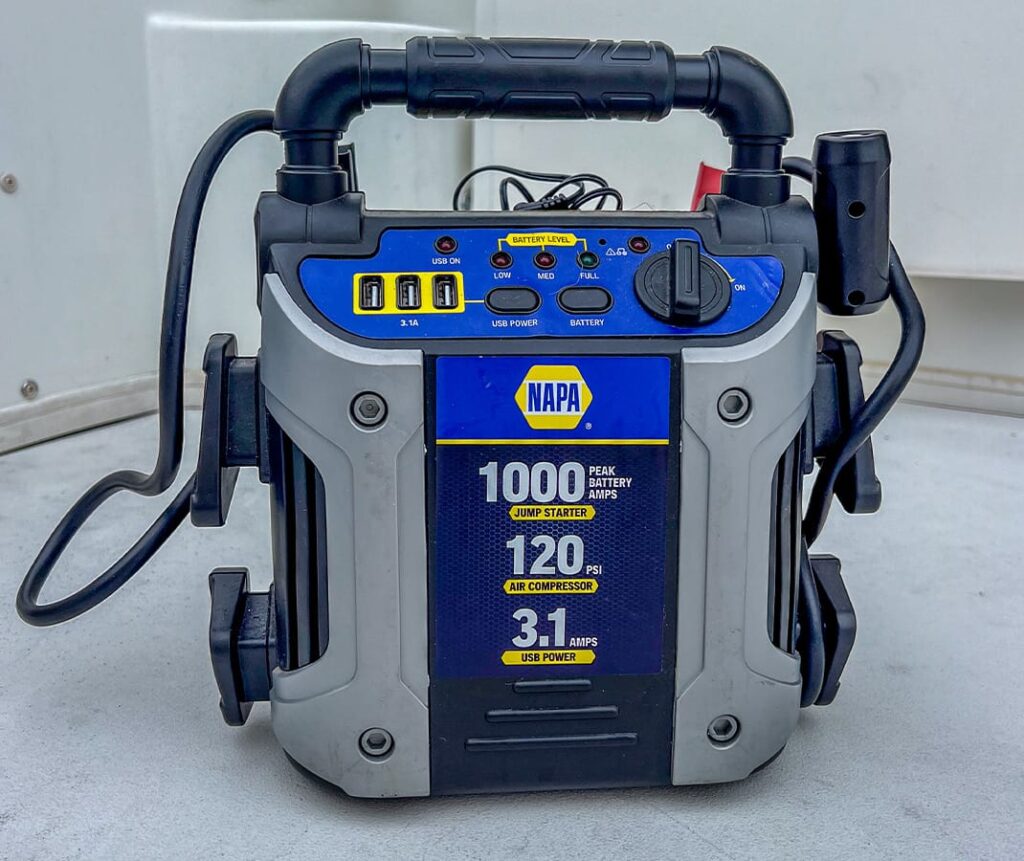
Electric Vessels: Lithium-Ion and the Need for Vigilance
Fully electric boats bring additional layers of complexity and risk, especially when it comes to battery care.
Lithium-ion batteries, commonly used in electric propulsion systems, are lightweight and powerful—but they’re also highly sensitive to saltwater. If these batteries become immersed or exposed to moisture, they can short-circuit and potentially cause fires that are extremely difficult to extinguish.
For this reason, electric boats are designed with well-sealed battery compartments. Still, vigilance is required. Check the bilge regularly and make sure water isn’t pooling near or around the battery housing. After every outing, inspect the area and dry it thoroughly.
Charging protocols matter too. Using a damaged battery or an incorrect charger can cause significant damage and increase the risk of fire. Always use chargers specifically rated for your battery system and follow the manufacturer’s instructions closely.
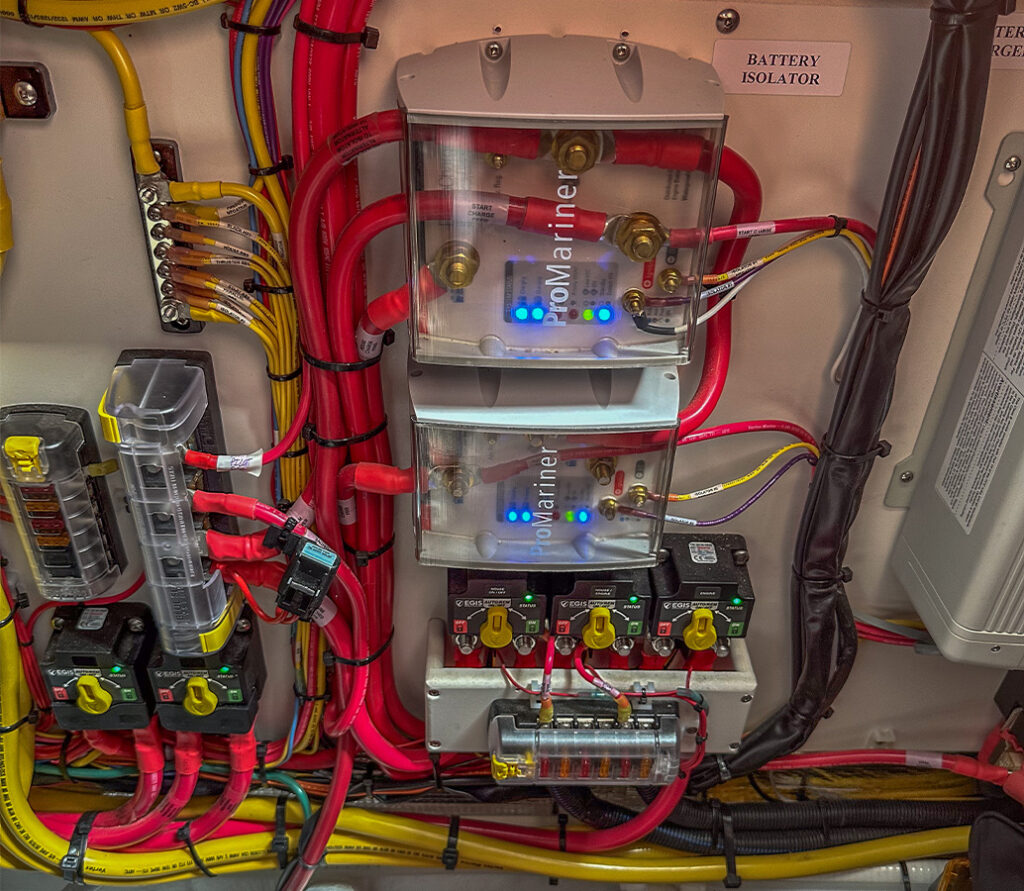
Final Thoughts: Common Sense and Good Practice
Marine electrical systems don’t have to be mysterious or intimidating. If you approach them with respect, follow basic safety practices, and keep your equipment well maintained, you’ll avoid most of the major pitfalls.
Fully electric vessels are becoming more popular every year, and with that comes the need for better battery management, smarter charging, and increased awareness of how water and electricity interact.
Ultimately, it comes down to common sense and routine care. A few proactive steps today can save you a world of trouble tomorrow.
